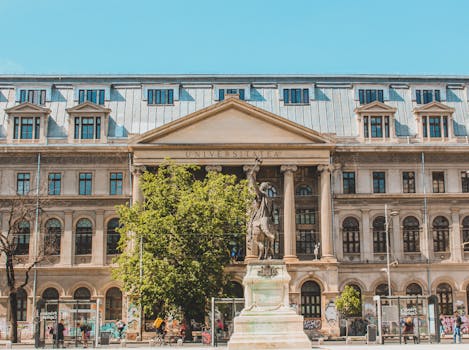
Traveling Through Time: How Europe’s Historical Heritage Shapes Modern Lifestyles in 2025
Traveling Through Time: How Europe’s Historical Heritage Shapes Modern Lifestyles in 2025. Europe, a continent steeped in history and tradition, has a profound impact on modern lifestyles. From the intricate architecture of ancient buildings to the vibrant arts and culture scene, Europe’s historical heritage continues to shape the way people live, work, and interact with one another in 2025.
The Influence of Historical Architecture
One of the most visible ways in which Europe’s historical heritage shapes modern lifestyles is through its architecture. From the grandeur of the Colosseum in Rome to the elegance of the Eiffel Tower in Paris, historical buildings continue to inspire and awe people in 2025. Many modern buildings and structures have been designed with historical influences in mind, incorporating elements such as arches, columns, and domes into their design.
The Arts and Culture Scene
Europe’s historical heritage has also had a profound impact on the arts and culture scene. From the works of famous artists such as Leonardo da Vinci and Vincent van Gogh to the iconic music of composers like Mozart and Beethoven, Europe’s rich cultural heritage continues to inspire and influence artists, musicians, and writers in 2025. The continent is home to numerous museums, galleries, and festivals, showcasing the best of European art, music, and literature.
Cuisine and Traditions
Europe’s historical heritage has also shaped the continent’s cuisine and traditions. From the delicate pastries of France to the hearty stews of Ireland, each country has its own unique culinary identity, shaped by its history and culture. Many traditional dishes and recipes have been passed down through generations, with modern chefs and foodies continuing to innovate and experiment with new flavors and ingredients in 2025.
Modern Lifestyles and Technology
Despite the many historical influences that shape modern lifestyles in Europe, the continent is also at the forefront of technological innovation and progress. From the sleek design of modern cities like Berlin and Barcelona to the cutting-edge technology of the European tech industry, Europe is a hub of creativity and innovation in 2025. Many historical cities have incorporated modern technology and infrastructure into their design, creating a unique blend of old and new that is quintessentially European.
Conclusion
In conclusion, Europe’s historical heritage continues to shape modern lifestyles in 2025, from architecture to art and cuisine. The continent’s rich cultural heritage has inspired and influenced artists, musicians, and writers, while its unique culinary identity has been shaped by its history and traditions. As Europe continues to evolve and innovate, its historical heritage remains an integral part of its identity, a reminder of the continent’s rich history and its ongoing influence on modern lifestyles.






